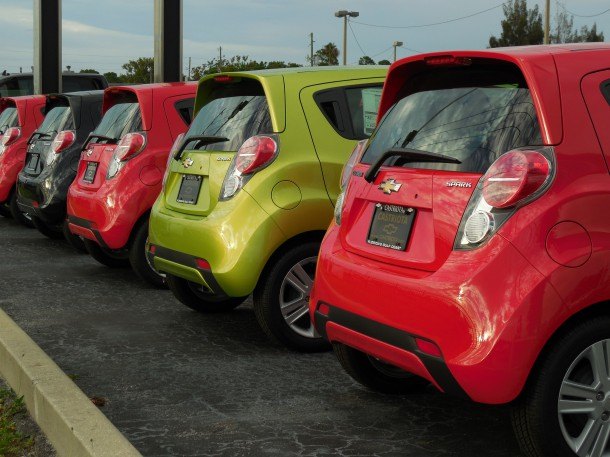JD Power: Millennials Buying More New Vehicles Than Expected
Millennials giving up on cars? Not according to a recent J.D. Power study.
The study found a 118 percent increase in new-vehicle purchases by the group — defined by J.D. Power as those born between 1977 and 1994 — between 2010 and 2014, Fusion reports. The jump blows away sales increases among Gen-Xers and Boomers at 57 percent and 31 percent, respectively.
Within the period, millennials bought 3.7 million new vehicles last year, compared to just 1.7 million in 2010. The increase also merits a jump in their share of overall new-vehicle purchases, coming out to 28 percent versus 24 percent for Gen-X and 37 percent for Boomers.
Despite this, the group is continually cash-strapped. Only 8 percent of sales are made with cash, according to J.D. Power. Thus, millennials are turning toward financing their new vehicles, with 40 percent accounting for all loans with terms of six years and above.
Their rides are also reflective of what’s in their wallets: millennials make up 30 percent of overall compact vehicle sales, and 25 percent of small car transactions. Average purchase price for a vehicle by a member of the group is $29,998.
Though there is a lack of data to compare millennial buying trends to those of older generations when the latter was their age, automotive analytics director Tim Dunne says the size of the millennial generation is helping to increase its share of new-vehicle sales over Gen-X, adding more members of their cohort are likely buying used over new.
Seattle-based writer, blogger, and photographer for many a publication. Born in Louisville. Raised in Kansas. Where I lay my head is home.
More by Cameron Aubernon

































Comments
Join the conversation
I call bull on this article. The findings from this must be from people that are in their 30's I know no one in my age group thats buying a 30k car unless they are getting some serious help from their parents (which there are plenty of those) or they are already established in their 30's. From my own research with my age group buying cars, I found the average price ranged from 13-18k which sounds more realistic than JD's findings.
So people 20-35 buy more new cars when credit is available than 15-30 year olds do when credit is tight. How much did they charge for this incredibly profound little tidbit? Now I feel like a cheapskate... I have never paid more than 6000 for a car, at least at the outset.
What about us Boomers? We have money! We like those big Cadillacs, Buicks, and Caprices with bench front seats, that are easy to get into an out of! Oh! They don't make those anymore. I'd better hold onto my 2005 Buick LeSabre.
Hmm, evidently I am a millennial. It seems like everyone uses a different cutoff, but under JD Power's I just make it. Using such a big age range - 17 years - makes the data pretty much useless. The buying power and preferences of a 21 year old and a 37 year old are so different that putting them in the same category proves nothing. It would be much more interesting to see this by year or by 3-5 year chunks